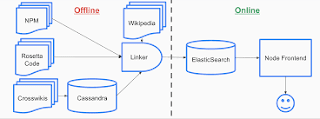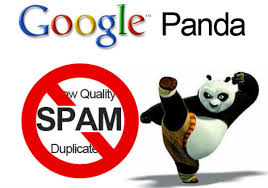social media optimization tutorial and types of social media optimization,advantage of social
media optimization.
1) Introduction of social media optimization - SMO stands for social media optimization.In other words ''social media optimization helps to increase the visibility of your website's social media profiles,social activities and published content,which helps people to search the resources and information related to your content.moreover,it helps to drive the traffic to your blog or website, make it easy for share for others in their circle , create a community around your brand helps search engine to index your social media activities, social profiles and blog posts with ease.
2) ROLE OF SOCIAL MEDIA OPTIMIZATION -
A) ENSURES A STRONG PRESENCE AMONG THE CUSTOMERS - with smo , you can ensure a strong presence for the business and the brand on the internet and amongst the customers .It introduces the business to new people,improving the visibility of the brand and maintaining the online reputation.
B) INCREASE THE REACH - SMO provides a way to reach (targeted) audience .You get to know what they want and present it to them, you can reach them via videos, infographics ,target the mobile users and more.
C) DRIVE MORE TRAFFIC - Social media platforms are a great source to drive traffic to the websites as it allows to reach the customers worldwide. That too, without any investment.
D) CREATING A BUZZ - You can create a buzz in the audience about your venture .Whether you are organizing a event, launching a new product or having a part , make your customers a part of it .
E) IMPROVES SEARCH ENGINE RANKING - SMO along with seo helps to improve the ranking of the website on the search engine .Since the search engine collects data from the social media such as google+ and show them in the results,it has gained importance.
3) WHICH SOCIAL MEDIA PLATFORM TO USE?
There are a large number of social media platforms there .so which platforms should we choose ? should we choose all that are trending or to choose the ones we are familiar with ?
When it comes to the selection of the social platforms ,one should check where it's target audience is most active on.These are the platforms which should be choosen rather then being active and putting efforts on everyone. Be active on few ,create your base and attract the customers.then you can think of other platforms.
4) TOP SOCIAL MEDIA PLATFORMS -
 |
| social media optimization tutorial |
Some of the best social media platforms facebook,google plus,twitter,linkedin, instagram .with the increase in the number of users using pinterest,we can also consider it as a social media platforms that drives a lot users to the website and also helps in creating quality backlinks.
THESE SOCIAL MEDIA PLATFORM CAN BE USED ONE BY ONE .
5) Association with viral promoting -
Internet based life advancement is from numerous points of view associated with the procedure of viral showcasing or "viral seeding" where verbal exchange is made using organizing in social bookmarking, video and photograph sharing sites. A compelling SMO crusade can bridle the intensity of viral showcasing; for instance, 80% of action on Pinterest is produced through "repinning." Furthermore, by following social patterns and using elective informal organizations, sites can hold existing supporters while likewise drawing in new ones. This enables organizations to construct a web based after and nearness, all connecting back to the organization's site for expanded movement. For instance, with a compelling social bookmarking effort, not exclusively would website be able to movement be expanded, yet a webpage's rankings can likewise be expanded. Likewise, the commitment with web journals makes a comparable outcome by sharing substance using RSS in the blogosphere and uncommon blog web crawlers. Internet based life improvement is viewed as a basic piece of an online notoriety administration (ORM) or web search tool notoriety administration (SERM) system for associations or people who think about their online presence.
Web-based social networking streamlining isn't restricted to advertising and brand building. Progressively, keen organizations are incorporating online networking cooperation as a feature of their insight administration methodology (i.e., item/benefit improvement, enlisting, representative commitment and turnover, mark building, consumer loyalty and relations, business advancement and the sky is the limit from there). Moreover, online life streamlining can be executed to cultivate a network of the related webpage, taking into consideration a solid business-to-shopper (B2C) relationship.
Web-based social networking streamlining isn't restricted to advertising and brand building. Progressively, keen organizations are incorporating online networking cooperation as a feature of their insight administration methodology (i.e., item/benefit improvement, enlisting, representative commitment and turnover, mark building, consumer loyalty and relations, business advancement and the sky is the limit from there). Moreover, online life streamlining can be executed to cultivate a network of the related webpage, taking into consideration a solid business-to-shopper (B2C) relationship.
6) The 16 standards of SMO, as indicated by one source, are as follows:
- Increment your linkability
- Make labeling and bookmarking simple
- Reward inbound connections
- Help your substance to "travel" by means of sharing
- Energize the mashup, where clients are permitted to remix content
- Be a client asset, regardless of whether it doesn't encourage you (e.g., give assets and data to clients)
- Reward accommodating and significant clients
- Take part (join the online discussion)
- Know how to focus on your crowd
- Make new, quality substance ("web scratching" of existing on the web content is disregarded by great web crawlers)
- Be "genuine" in the tone and style of the posts
- Keep in mind your foundations; be unassuming
- Try not to be hesitant to test, develop, attempt new things and "remain new"
- Build up a SMO procedure
- Pick your SMO strategies shrewdly
- Make SMO a key piece of your showcasing procedure and create organization
7) The Social Media Strategy may consider:-
- Targets e.g. making brand mindfulness and utilizing online life for outside correspondences.
- Listening e.g. observing discussions identifying with clients and business destinations.
- Gathering of people e.g. discovering who the clients are, their main event, their identity affected by, and what they oftentimes discuss. It is essential to work out what clients need in return for their online commitment and consideration.
- Interest and substance e.g. setting up a nearness and network on the web and drawing in with clients by sharing valuable and fascinating data.
- Estimation e.g. tracking preferences and remarks on posts, and the quantity of offers to screen development and figure out which strategies are most helpful in enhancing internet based life.































































